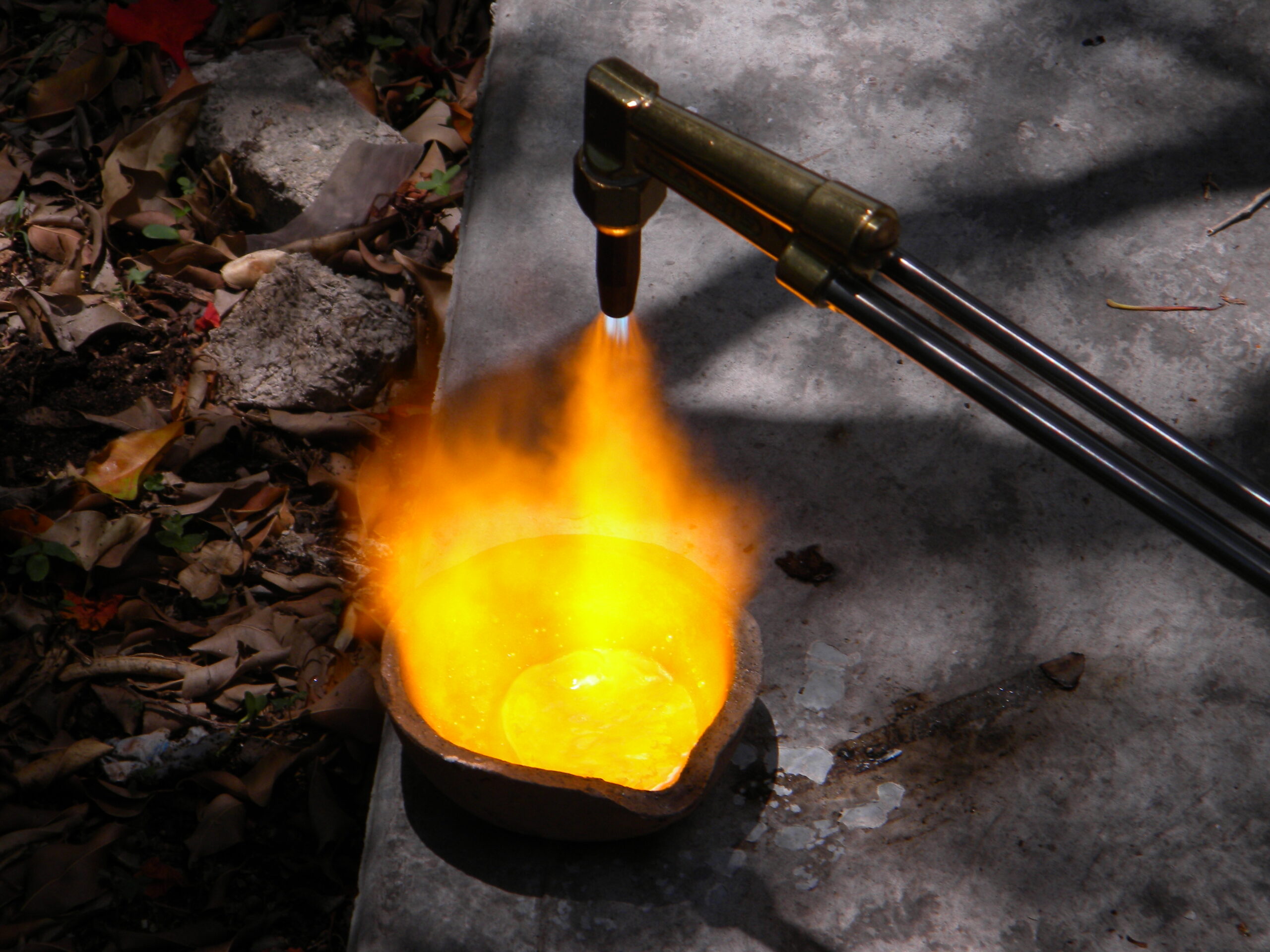In “Unlocking the Mysteries: Gold Melting Point Explained for Enthusiasts and Prospectors,” we delve into the intriguing details to answer the question of “What is the melting point of gold?”, which is 1,948 degrees Fahrenheit (1,064°C) for pure gold. The presence of alloy metals like copper can alter this melting point. The article discusses why gold is often alloyed in jewelry, highlighting its malleability and historical significance. It also covers the smelting process, emphasizing the role of fluxes and crucibles in producing nearly pure gold. This piece offers valuable insights for both gold enthusiasts and prospectors.

What is the Gold Melting Point?
The melting point of gold refers to the temperature at which gold changes from a solid state to a liquid state. The melting point of pure gold is 1,948 degrees Fahrenheit (1,064°C). However, it is important to note that the melting point of gold can vary if other alloy metals are present. Copper is commonly used as a base metal for gold alloys, and the presence of these metals can affect the temperature required to melt gold.
It is worth mentioning that pure gold, also known as 24 karat gold, is relatively soft. To enhance its hardness and ductility, as well as to alter its color and other properties, gold is often alloyed with base metals. Gold alloys with lower carat ratings, such as 22k, 18k, 14k, or 10k, contain higher percentages of copper, silver, palladium, or other base metals. These alloying elements impact the melting point and other metallurgical properties of the gold.
Factors Affecting Gold Melting Point
Several factors can affect the melting point of gold. The presence of alloying elements, such as copper, silver, or palladium, can raise or lower the melting point. The carat rating of the gold also plays a role, as higher carat ratings indicate a higher gold content and thus a higher melting point.
Additionally, impurities in the gold can affect its melting point. Many natural forms of gold contain impurities, and these impurities must be removed through smelting, a metallurgical process that involves burning off the impurities to obtain nearly pure gold.
Effects of Alloying on Gold Melting Point
As mentioned earlier, alloying gold with base metals like copper, silver, or palladium can significantly impact its melting point. Copper is the most commonly used base metal in gold alloys, and it can lower the melting point of gold. By increasing the percentage of copper in the alloy, the melting point can be reduced.
On the other hand, adding silver or palladium to the gold alloy can raise the melting point. These alloying elements increase the overall stability and strength of the gold, resulting in a higher melting point.
Common Gold Alloys and their Melting Points
There are several common gold alloys used in various applications, each with its own melting point. Here are a few examples:
- 22-karat gold: This alloy contains 91.7% gold and 8.3% other metals, usually copper and silver. Its melting point is slightly lower than that of pure gold.
- 18-karat gold: With a gold content of 75%, this alloy is commonly used in jewelry. It has a higher melting point compared to 22-karat gold.
- 14-karat gold: This alloy contains 58.3% gold and is often used in both jewelry and dental applications. It has a lower melting point than 18-karat gold.
- 10-karat gold: This is the lowest carat gold alloy, with a gold content of 41.7% and a lower melting point compared to higher carat golds.
These are just a few examples, and there are many other gold alloys with varying melting points depending on their composition.
Methods of Melting Gold
There are several methods for melting gold, each with its own advantages and considerations. Here are three common methods:
Furnace Melting
Furnace melting is a traditional and widely-used method for melting gold. It involves using a high-temperature furnace to heat the gold to its melting point. Furnaces used for melting gold are designed to withstand the high temperatures and can range in size from small tabletop furnaces to larger industrial-scale furnaces.
Microwave Kiln Melting
Microwave kiln melting is a more modern and convenient method for melting gold. It involves using a specialized microwave kiln designed for melting metals. The kiln utilizes microwave energy to heat the gold and melt it. This method is often preferred for smaller-scale melting operations or for melting small quantities of gold.
Torch Melting
Torch melting is another common method for melting gold, especially for smaller-scale operations. It involves using a torch, such as an oxy-acetylene torch or a propane torch, to heat the gold to its melting point. Torch melting requires skill and precision to ensure proper heat distribution and to avoid overheating or damaging the gold.
You can find Small kiln kits for melting gold here
Smelting Gold to Remove Impurities
Smelting gold is a metallurgical process that involves burning off the impurities present in the gold to obtain nearly pure gold. This process is essential for refining gold and ensuring its quality. Smelting typically involves using a crucible, a container made of graphite carbon that can withstand the high temperatures required for smelting.
A mixture of flux, such as silica and borax, is added to the gold-bearing material in the crucible. The flux helps collect and remove impurities from the gold, as well as hold together fine gold particles. The crucible is then heated to high temperatures, allowing the impurities to burn off and leaving behind nearly pure gold.
Conclusion
In conclusion, the melting point of gold is 1,948 degrees Fahrenheit (1,064°C) when pure. However, the presence of alloying elements and impurities can affect the melting point. Gold alloys with base metals like copper, silver, or palladium can have higher or lower melting points depending on the composition. Different methods, such as furnace melting, microwave kiln melting, and torch melting, can be utilized to melt gold. Smelting is an essential process for removing impurities and obtaining nearly pure gold. Understanding the factors affecting gold melting point is crucial for various applications, including jewelry making, refining processes, and metallurgical purposes.
Read more about gold melting here
Read more about gold prospecting here



